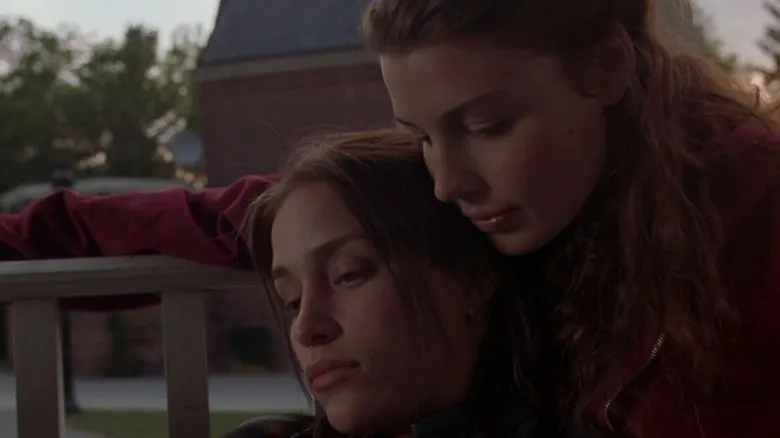“Lost and Delirious”: A Sentimental Journey Stuck in Time
Judging by the accolades showered upon it at festivals in Stockholm, Verona, Valladolid, Mar Del Plata, and its native Canada, “Lost and Delirious” should be a cinematic triumph. The fact that it’s a youth-oriented film that avoids being vapid is already commendable. The director, Léa Pool, a young woman herself, aligns with contemporary trends. The cinematography seems to have captured every prize, with stunning visuals of wild forests and manicured lawns surrounding an old, prestigious private college.
Piper Perabo, in the lead role (known for “Slap Her… She’s French”), is increasingly proving herself as a genuine artist, even channeling Sarah Bernhardt at times. The theme itself, “about love,” is explored quite radically. Young lesbians experience love in its purest form, devoid of “orientation,” as the film argues. But why does the film, and its aftermath, leave a lingering sense of artificiality and tedium? What went wrong?

The film seemingly brings the woes of unrequited love up to modern standards. A high school student with a difficult past falls for her roommate, who reciprocates. However, when the “troubled” roommate is caught in bed with her lover by the younger sister, issues of social standing arise. The sister disapproves, the parents condemn, and hopes for a bright future are dashed. Is it better to abandon mutual affection? At 16, the future seems boundless and, surely, will outweigh any present emotions. The well-off roommate leaves for a boy, and the “troubled” one cannot cope.
Context and Conflict
The circumstances of the conflict are quite rich. There’s a wounded falcon, rescued, healed, and released by the “troubled” girl, providing a natural context. There are Lady Macbeth’s monologues, recited in class during their study of Shakespeare, offering a cultural context. There’s an old teacher who understands, having experienced something similar, adding a human context. Finally, there’s a witness – the third roommate – impassively observing the entire affair. The “troubled” girl’s constant emotional turmoil serves as the plot-driving context. Even the fencing lessons, typical of expensive colleges, hint at a threat, a serious duel. It’s almost “Hamlet”-esque.

A Lack of Resolution
While the ending shouldn’t be revealed, the problem lies in the fact that, even without it, the film only pretends to be Shakespearean. Whatever he wrote, whether Hamlet’s “the rest is silence,” Othello’s suicidal “O! O! O! O!,” or Lady Macbeth’s blood-soaked hands, he found a definitive resolution for his problems. Even if everything was bad, it was right, just, each received their due, and his problems were on a grander scale than unrequited love. Here, in the film, there is no resolution in sight.
What should one do when love exists but is betrayed? Seek revenge or simply show contempt, leave and wait for time to heal, or blame oneself until betrayed to death? What is right in general, not just beneficial or accidental? The impassive observer’s conclusion that the “troubled” girl took the wrong path is nonsense. Everything Piper Perabo portrays as the “troubled” girl is perfectly natural, dating back to “The Sorrows of Young Werther” and various “Corsairs” by Charles Nodier, from the era of sentimentalism. It was a literary movement of the late 18th century. The only resolution, the inner harmony achieved by the impassive observer by mentally reconciling with her mother’s death, is a complete substitution. The film isn’t about her. It turns out that “Lost and Delirious” is entirely limited by sentimentalism, the expression of feelings. All contexts confirm this. But when feelings completely replaced brains in the literature of the late 18th century, it outlived itself and never revived. Why keep sobbing if nothing moves forward? 200 years have passed since then.

Overall, despite its tedium, the film is better than the utterly helpless recent “Show Me Love” by Lukas Moodysson.
But it is significantly worse than Chantal Akerman’s “lesbian” works from twenty years ago and simply incomparable to Robert Aldrich’s “The Killing of Sister George” from thirty years ago.